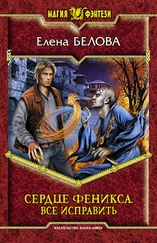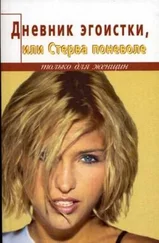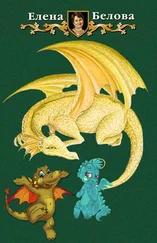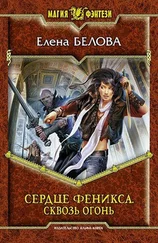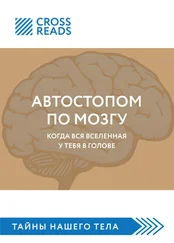9. Changizi M. A., Hsieh A., Nijhawan R., Kanai R., Shimojo S. Perceiving the Present and a Systematization of Illusions. Cogn Sci. 2008 Apr 5;32(3):459–503.
10. Аре Бреан, Гейр Ульве Скейе. Музыка и мозг. — Москва: Альпина Паблишер, 2020. — 295 c.
11. Linden D. E., Kallenbach U., Heinecke A., Singer W., Goebel R. The Myth of Upright Vision. A Psychophysical and Functional Imaging Study of Adaptation to Inverting Spectacles. Perception. 1999 Apr;28(4):469–81.
12. Brandt T., Strupp M., Dieterich M. Towards a concept of disorders of «higher vestibular function». Front Integr Neurosci. 2014;8:47.
13. Комаров С. М. Ах, как кружится голова… 2016;(6). Available from: https://hij.ru/read/6040.
14. Purves D., editor. Neuroscience. Sixth edition. New York: Oxford University Press; 2018. 1 p.
Как устроено движение
1. Desmurget M., Sirigu A. Revealing humans’ sensorimotor functions with electrical cortical stimulation. Philos Trans R Soc Lond B Biol Sci. 2015 Sep 19; 370 (1677): 20140207.
2. Catani M. A little man of some importance. Brain J Neurol. 2017 Nov 1; 140 (11): 3055–61.
3. Kalat J. W. Biological psychology. 9th ed. Belmont, CA: Thomson/Wadsworth; 2007. 582 p.
4. Bear M. F., Connors B. W., Paradiso M. A. Neuroscience: exploring the brain. Fourth edition. Philadelphia: Wolters Kluwer; 2016. 975 p.
5. Nann M., Cohen L. G., Deecke L., Soekadar S. R. To jump or not to jump — The Bereitschaftspotential required to jump into 192-meter abyss. Sci Rep. 2019 Dec;9 (1): 2243.
6. Schultze-Kraft M., Birman D., Rusconi M., Allefeld C., Görgen K., Dähne S. et al. The point of no return in vetoing self-initiated movements. Proc Natl Acad Sci USA. 2016 Jan 26; 113 (4): 1080–5.
7. Schaefer M., Heinze H-J., Galazky I. Alien hand syndrome: neural correlates of movements without conscious will. PloS One. 2010 Dec 13;5 (12): e15010.
8. Blanke O., Arzy S. The out-of-body experience: disturbed self-processing at the temporo-parietal junction. Neurosci Rev J Bringing Neurobiol Neurol Psychiatry. 2005 Feb;11 (1): 16–24.
9. Rolls E. T. The cingulate cortex and limbic systems for emotion, action and memory. Brain Struct Funct. 2019 Dec; 224(9): 3001–18.
10. Gothard K. M. The amygdalo-motor pathways and the control of facial expressions. Front Neurosci [Internet]. 2014 Mar 19 [cited 2021 May 17];8. Available from: http://journal.frontiersin.org/article/10.3389/fnins.2014.00043/abstract.
11. Herculano-Houzel S. The human brain in numbers: a linearly scaled-up primate brain. Front Hum Neurosci [Internet]. 2009 [cited 2019 Jul 5];3. Available from: http://journal.frontiersin.org/article/10.3389/neuro.09.031.2009/abstract.
12. Apps R., Garwicz M. Anatomical and physiological foundations of cerebellar information processing. Nat Rev Neurosci. 2005 Apr; 6(4): 297–311.
13. Doya K. Complementary roles of basal ganglia and cerebellum in learning and motor control. Curr Opin Neurobiol. 2000 Dec 1;10 (6): 732–9.
14. Seger C.A, Spiering B. J. A Critical Review of Habit Learning and the Basal Ganglia. Front Syst Neurosci [Internet]. 2011 [cited 2018 Aug 18]; 5. Available from: http://journal.frontiersin.org/article/10.3389/fnsys.2011.00066/abstract.
15. Clauss J. A., Avery S. N., Blackford J. U. The nature of individual differences in inhibited temperament and risk for psychiatric disease: A review and meta-analysis. Prog Neurobiol. 2015 Apr; 127–128: 23–45.
16. Schultz W. Predictive Reward Signal of Dopamine Neurons. J Neurophysiol. 1998 Jul; 80(1): 1–27.
17. Graybiel A. M., Grafton S. T. The Striatum: Where Skills and Habits Meet. Cold Spring Harb Perspect Biol. 2015 Aug; 7(8): a021691.
18. Cooper C., Moon H. Y., van Praag H. On the Run for Hippocampal Plasticity. Cold Spring Harb Perspect Med. 2018 Apr 2; 8 (4).
19. Di Liegro C. M., Schiera G., Proia P., Di Liegro I. Physical Activity and Brain Health. Genes. 2019 Sep 17; 10 (9).
20. Phillips C. Lifestyle Modulators of Neuroplasticity: How Physical Activity, Mental Engagement and Diet Promote Cognitive Health during Aging. Neural Plast. 2017: 3589271.
21. Chakravarthy V. S., Joseph D., Bapi R. S. What do the basal ganglia do? A modeling perspective. Biol Cybern. 2010 Sep; 103 (3): 237–53.22.
22. Eisinger R. S., Urdaneta M. E., Foote K. D., Okun M. S., Gunduz A. Non-motor Characterization of the Basal Ganglia: Evidence From Human and Non-human Primate Electrophysiology. Front Neurosci. 2018 Jul 5; 12:385.
Как устроена память
1. Виталий Лейбин, Наталья Кузнецова. Русский репортер. Слова не выкинешь. Какие песни мы поем в душе и какими стихами говорим [Internet]. 2015. Available from: https://web.archive.org/web/20160419070850/http://rusrep.ru/article/2015/06/26/slova-ne-vyikinesh.
2. Queenan B. N., Ryan T. J., Gazzaniga M. S., Gallistel C. R. On the research of time past: the hunt for the substrate of memory. Ann N Y Acad Sci. 2017 May;1396(1): 108–25.
3. Eichenbaum H. Still searching for the engram. Learn Behav. 2016 Sep; 44(3): 209–22.
4. Corkin S. Permanent present tense: the unforgettable life of the amnesic patient, H. M. First Edition. New York: Basic Books; 2013. 364 p.
5. Squire L. R., Dede A. J. O. Conscious and Unconscious Memory Systems. Cold Spring Harb Perspect Biol. 2015 Mar;7(3):a021667.
6. Baddeley A. Working Memory: Theories, Models and Controversies. Annu Rev Psychol. 2012 Jan 10;63(1):1–29.
7. Mayford M., Siegelbaum S. A., Kandel E. R. Synapses and memory storage. Cold Spring Harb Perspect Biol. 2012 Jun 1;4(6).
8. Moser M-B., Rowland D. C., Moser E. I. Place cells, grid cells, and memory. Cold Spring Harb Perspect Biol. 2015 Feb 2;7(2): a021808.
9. Eichenbaum H. The role of the hippocampus in navigation is memory. J Neurophysiol. 2017 Apr 1;117(4): 1785–96.
10. Buzsáki G., Llinás R. Space and time in the brain. Science. 2017 Oct 27;358(6362): 482–5.
11. Josselyn S. A., Köhler S., Frankland P. W. Finding the engram. Nat Rev Neurosci. 2015 Sep;16(9): 521–34.
12. van Kesteren M. T. R, Meeter M. How to optimize knowledge construction in the brain. NPJ Sci Learn. 2020;5:5.
13. McKenzie S., Robinson N. T. M., Herrera L., Churchill J. C., Eichenbaum H. Learning causes reorganization of neuronal firing patterns to represent related experiences within a hippocampal schema. J Neurosci Off J Soc Neurosci. 2013 Jun 19;33(25): 10243–56.
14. Paller K. A., Wagner A. D. Observing the transformation of experience into memory. Trends Cogn Sci. 2002 Feb;6(2): 93–102.
15. Roozendaal B., McEwen B. S., Chattarji S. Stress, memory and the amygdala. Nat Rev Neurosci. 2009 Jun;10(6): 423–33.
16. Richards B. A., Frankland P. W. The Persistence and Transience of Memory. Neuron. 2017 Jun;94(6): 1071–84.
17. Walker M. P., Stickgold R. Sleep-Dependent Learning and Memory Consolidation. Neuron. 2004 Sep;44(1): 121–33.
18. Buhry L., Azizi A. H., Cheng S. Reactivation, replay, and preplay: how it might all fit together. Neural Plast. 2011; 2011:203462.
19. Crowley R., Bendor D., Javadi A-H. A review of neurobiological factors underlying the selective enhancement of memory at encoding, consolidation and retrieval. Prog Neurobiol. 2019 Aug;179:101615.
20. Preston A. R., Eichenbaum H. Interplay of Hippocampus and Prefrontal Cortex in Memory. Curr Biol. 2013 Sep;23(17):R764–73.
21. Loftus E. F., Pickrell J. E. The Formation of False Memories. Psychiatr Ann. 1995 Dec;25(12): 720–5.
22. Wade K. A., Garry M., Don Read J., Lindsay D. S. A picture is worth a thousand lies: Using false photographs to create false childhood memories. Psychon Bull Rev. 2002 Sep;9(3): 597–603.
Читать дальше
Конец ознакомительного отрывка
Купить книгу



